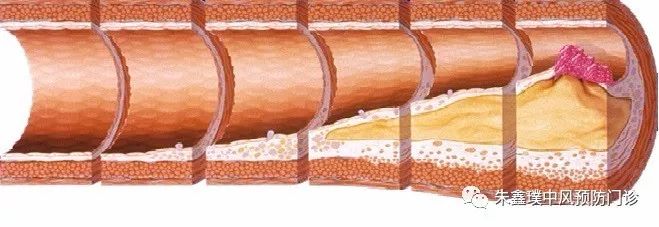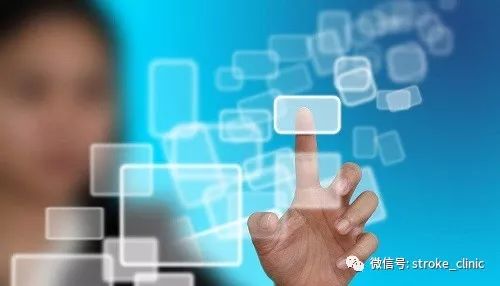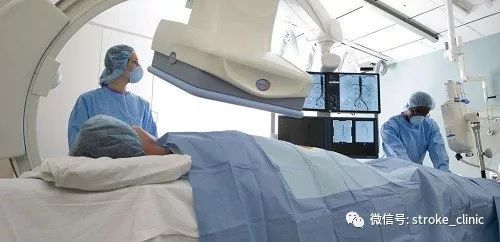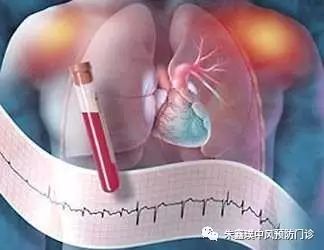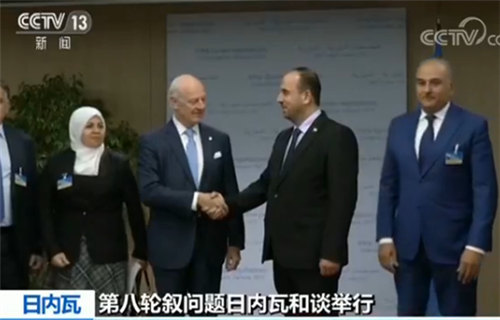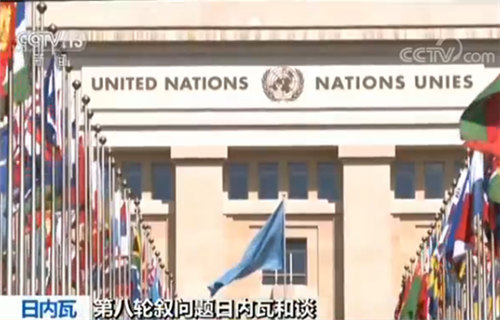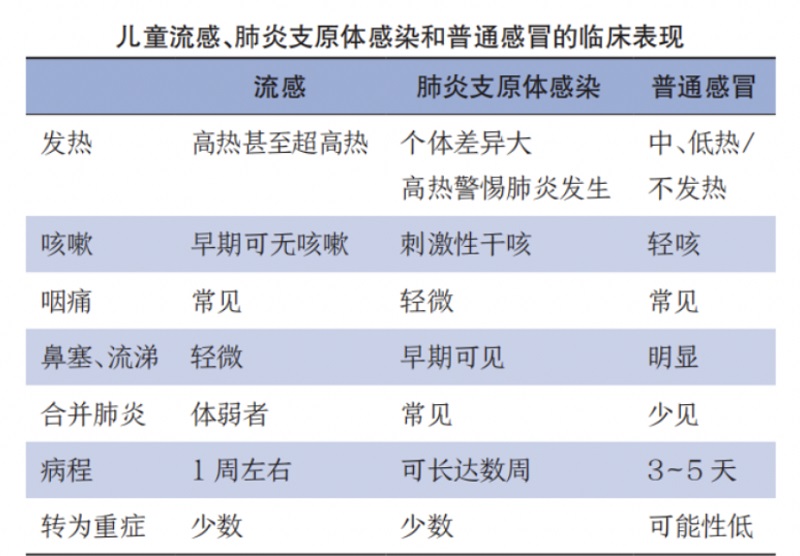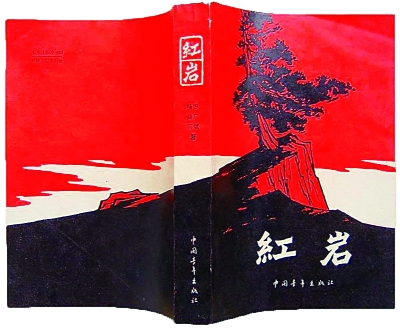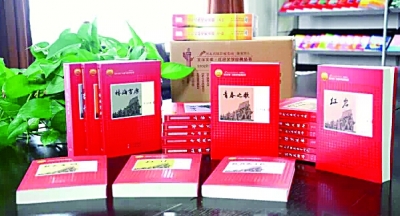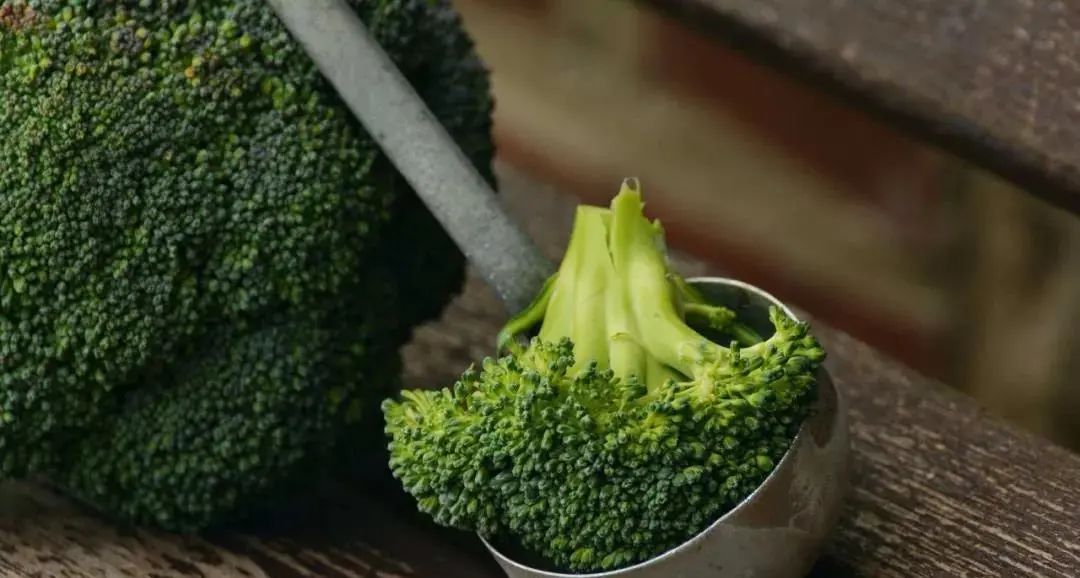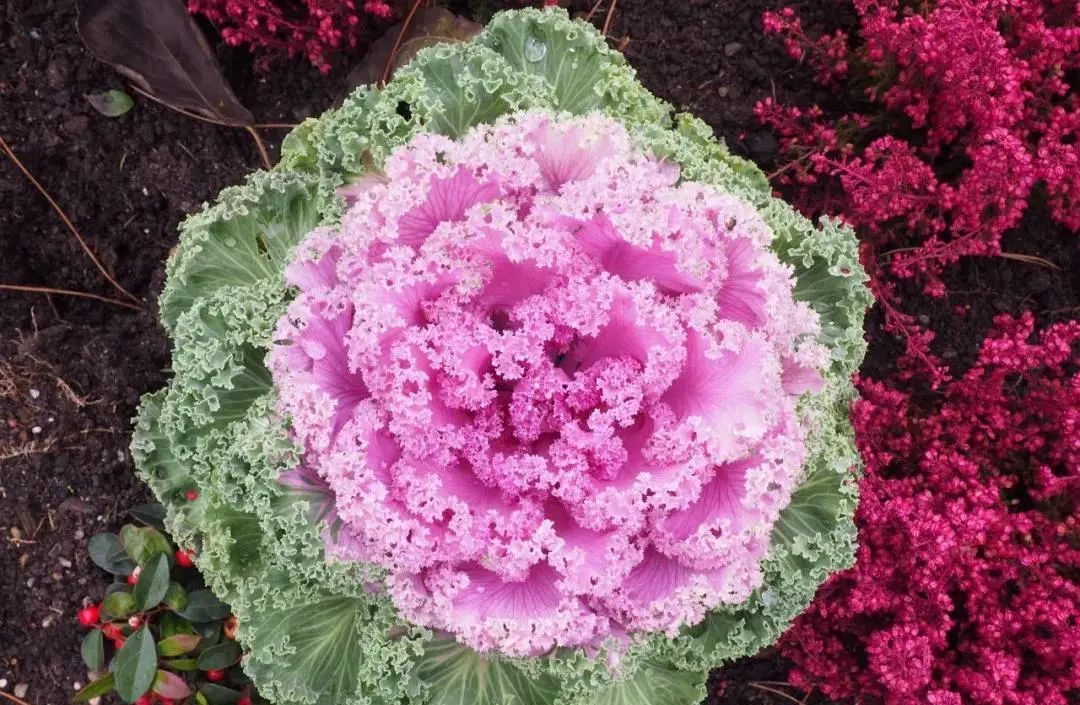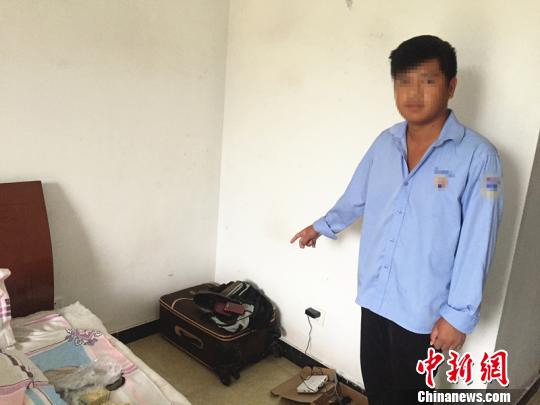catalogue
The first part is an overview of the General Office of the National Committee of the Chinese People’s Political Consultative Conference.
The second part of the 2021 departmental budget table
The third part of the department budget in 2021.
The fourth part explains nouns.
The first part is an overview of the General Office of the National Committee of the Chinese People’s Political Consultative Conference.
I. Departmental functions
The first plenary session of China People’s Political Consultative Conference was held on September 21st, 1949. The China People’s Political Consultative Conference has a national committee and local committees. The term of office of the National Committee of the Chinese People’s Political Consultative Conference is five years, and now it is the thirteenth session. The National Committee of the Chinese People’s Political Consultative Conference (CPPCC) has set up a general office as a working body to undertake various tasks for Chinese People’s Political Consultative Conference to perform its functions of political consultation, democratic supervision and participation in deliberation and administration of state affairs.
(a) responsible for the organization and service of the plenary session of the National Committee of the Chinese People’s Political Consultative Conference, the Standing Committee meeting, the chairman meeting, the special consultation meeting, the biweekly consultation forum, the secretary general meeting and other important meetings and activities.
(two) responsible for the implementation of the resolutions and decisions of the plenary session of the National Committee of the Chinese People’s Political Consultative Conference, the Standing Committee meeting and the chairman meeting.
(3) To study the theories and policies of the United Front and the CPPCC, and put forward suggestions for the CPPCC to perform its functions; Drafting important manuscripts of Chinese People’s Political Consultative Conference; Coordinate and organize the internal and external propaganda work of the CPPCC.
(four) responsible for coordinating and ensuring the organization and service work of the special committee to carry out the special investigation plan and carry out related activities.
(five) to be responsible for the coordination and service of the proposal submitted by Committee member Chinese People’s Political Consultative Conference.
(six) to sort out and submit the investigation reports, inspection reports, speeches and suggestions made by CPPCC organizations and members in performing their functions; Collect and reflect social conditions and public opinion, and handle letters and visits from CPPCC members and the people.
(seven) to be responsible for the organization and service of Chinese People’s Political Consultative Conference members’ inspection and study activities.
(eight) to participate in the consultation and recommendation of members of Chinese People’s Political Consultative Conference, and other relevant personnel work.
(nine) responsible for the work contact with the relevant departments of the Central Committee of the Communist Party of China, the National People’s Congress, the State Council and the local CPPCC; Responsible for contacting the central committees of democratic parties, the All-China Federation of Industry and Commerce and other participating units of the CPPCC.
(ten) to be responsible for the foreign affairs, organization and personnel management of Chinese People’s Political Consultative Conference organs, and to guide the training of CPPCC cadres at all levels.
(eleven) responsible for the logistics of Chinese People’s Political Consultative Conference and the organs, including fund management, infrastructure and audit.
(twelve) to undertake other tasks assigned by the leading comrades of Chinese People’s Political Consultative Conference.
Second, the establishment of departments and institutions
Chinese People’s Political Consultative Conference’s general office consists of research office, Secretariat Bureau, Proposal Committee Office, Economic Committee Office, Agriculture and Rural Committee Office, Population, Resources and Environment Committee Office, Education, Health and Sports Committee Office, Social and Legal Committee Office, Ethnic and Religious Committee Office, Hong Kong, Macao and Taiwan Overseas Chinese Committee Office, Foreign Affairs Committee Office, Culture, Literature, History and Learning Committee Office, Liaison Bureau, Information Bureau, Foreign Affairs Bureau, Personnel Bureau, Administration Bureau, Party Committee and Bureau of Retired Cadres.
Chinese People’s Political Consultative Conference Office has 14 budget units, including:
1. There are 4 administrative units, including Chinese People’s Political Consultative Conference General Office, China Vocational Education Society, Huangpu Military Academy Alumni Association, and European and American Alumni Association.
2. There are 9 directly affiliated institutions, including People’s Political Consultative Conference Newspaper, Chinese People’s Political Consultative Conference Auditorium, Chinese People’s Political Consultative Conference Cadre Training Center (Chinese People’s Political Consultative Conference Beidaihe Administration), Education and Career Magazine, Huangpu Magazine, Chinese People’s Political Consultative Conference General Office Information Center, China Political Consultative Conference Magazine, Chinese People’s Political Consultative Conference Organ Service Center and China Political Consultative Conference Literature and History Museum.
3. One central cultural enterprise, China Literature and History Publishing House Co., Ltd..
The second part of the 2021 departmental budget table




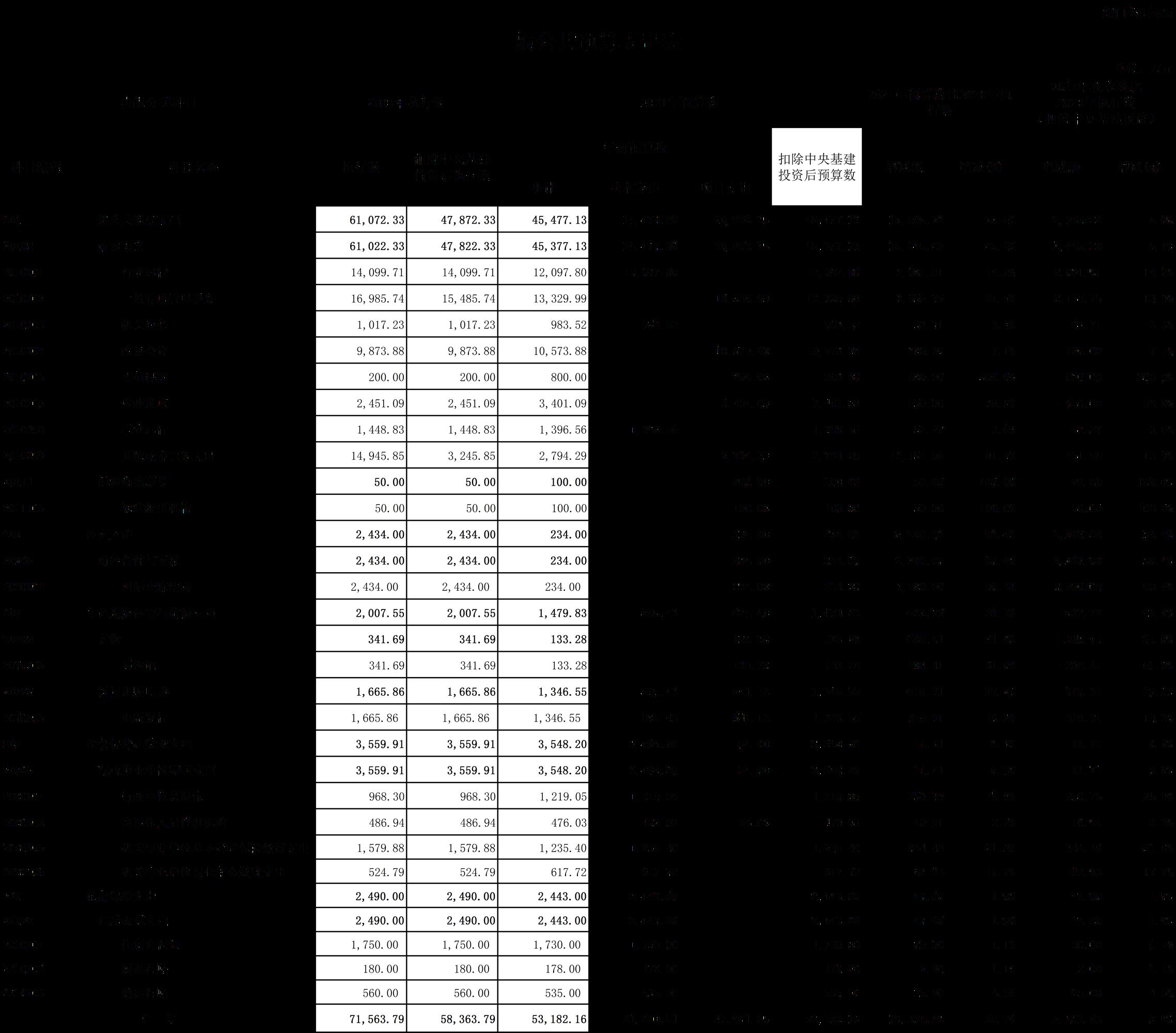




In 2021, the General Office of the National Committee of the Chinese People’s Political Consultative Conference did not use the financial allocation of the government fund budget and the financial allocation of the state-owned capital operation budget.
The third part of the department budget in 2021.
I. Description of the Summary of Income and Expenditure in 2021
According to the principle of comprehensive budget, all income and expenditure of the General Office of the National Committee of the Chinese People’s Political Consultative Conference are included in the departmental budget management. Income includes: general public budget allocation income, business income, business income of institutions, other income, and carry-over from the previous year; Expenditure includes: general public service expenditure, diplomatic expenditure, cultural tourism, sports and media expenditure, social security and employment expenditure, housing security expenditure, etc. The General Office of the National Committee of the Chinese People’s Political Consultative Conference has a total revenue and expenditure budget of 1,040,338,000 yuan in 2021.
II. Explanation on the Summary of Income in 2021
The revenue budget of the General Office of the National Committee of the Chinese People’s Political Consultative Conference in 2021 is 1,040,338,000 yuan, of which: 274,887,700 yuan was carried forward from the previous year, accounting for 26.42%; The general public budget revenue was 531,821,600 yuan, accounting for 51.12%; Business income was 190,051,200 yuan, accounting for 18.27%; The operating income of institutions was 33,732,900 yuan, accounting for 3.24%; Other income was 9,844,600 yuan, accounting for 0.95%.
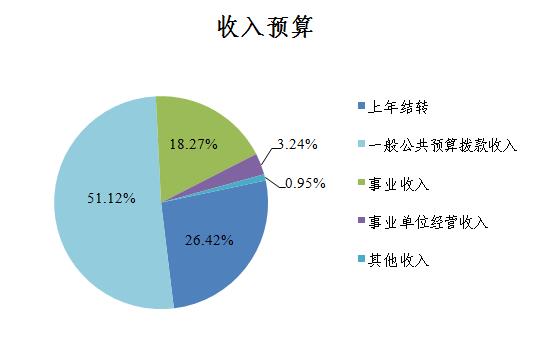
III. Explanation on the Summary of Expenditure in 2021
The expenditure budget of the General Office of the National Committee of the Chinese People’s Political Consultative Conference in 2021 is 1,032,080,300 yuan, of which the basic expenditure is 451,498,800 yuan, accounting for 43.75%; The project expenditure is 580,581,500 yuan, accounting for 56.25%.
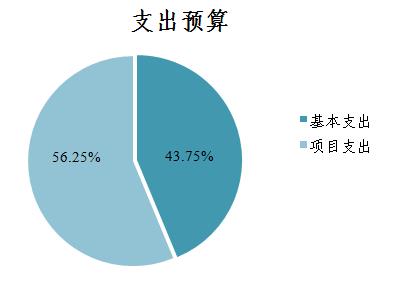
IV. Explanation on the Summary of Financial Appropriations in 2021
The General Office of the National Committee of the Chinese People’s Political Consultative Conference has a total budget of 804,200,200 yuan in 2021. All the income is allocated from the general public budget, including: 531,821,600 yuan from the general public budget in the current year and 272,378,600 yuan carried forward from the previous year; Expenditure includes: general public service expenditure of 690.652 million yuan, diplomatic expenditure of 26.68 million yuan, cultural tourism, sports and media expenditure of 17.737 million yuan, social security and employment expenditure of 44.611 million yuan, and housing security expenditure of 24.52 million yuan. There is no government fund budget allocation and state-owned capital operation budget allocation.

V. Explanation on the Expenditure Table of General Public Budget in 2021
(1) Changes in the allocation scale of the general public budget in the current year
The General Office of the National Committee of the Chinese People’s Political Consultative Conference allocated 531,821,600 yuan in the general public budget in 2021, which was 183,816,300 yuan less than the implementation in 2020. The main reasons are: in accordance with the relevant requirements of the CPC Central Committee and the State Council on living a tight life, we have strictly economized on all undertakings, greatly reduced general expenditures, and focused on reducing non-urgent and non-rigid expenditures involved in government public funds, funds for international exchange activities, maintenance and operation, and equipment purchase expenses, and at the same time, we have reasonably guaranteed expenditure needs such as funds for participating in political activities and special conference fees, which are reflected in relevant expenditure items.
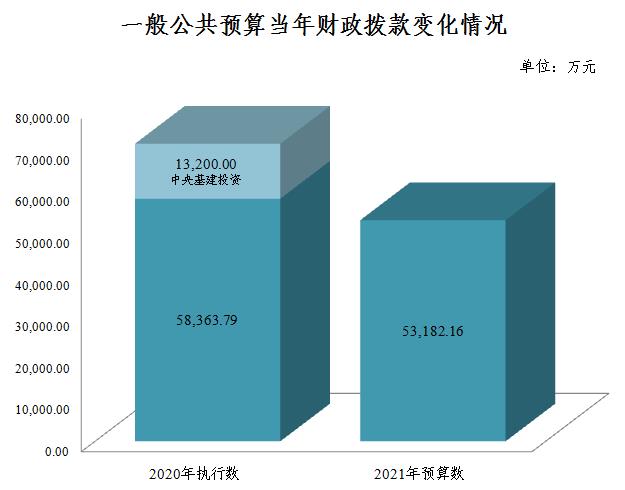
(two) the allocation structure of the general public budget in the current year
Among the general public budget allocations in the current year, the general public service expenditure was 454,771,300 yuan, accounting for 85.51%; Diplomatic expenditure was 2.34 million yuan, accounting for 0.44%; Expenditure on culture, tourism, sports and media was 14,798,300 yuan, accounting for 2.78%; Expenditure on social security and employment was 35.482 million yuan, accounting for 6.67%; Expenditure on housing security was 24.43 million yuan, accounting for 4.60%.
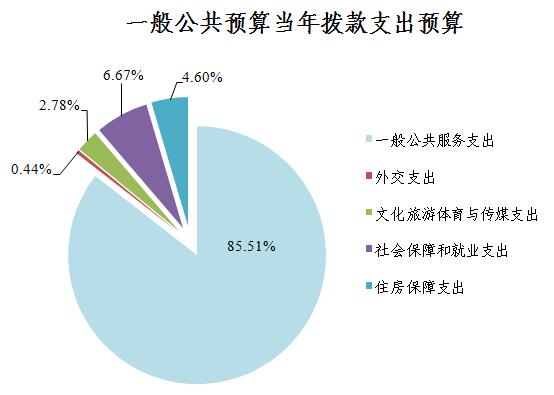
(three) the specific use of the general public budget in the current year.
1. General public service expenditure (category) Administrative operation of CPPCC affairs (item) The budget for 2021 is 120,978,000 yuan, a decrease of 20,019,100 yuan or 14.2% compared with the implementation in 2020. Mainly to implement the requirements of tight days and reduce related funds.
2. General public service expenditure (category) CPPCC affairs (section) The budget for general administrative affairs (item) in 2021 was 133,299,900 yuan, a decrease of 36,557,500 yuan or 21.5% compared with the implementation in 2020. Mainly due to the reduction of one-time expenditure.
3. General public service expenditure (category) The budget for services (items) of CPPCC affairs (items) in 2021 is 9,835,200 yuan, a decrease of 337,100 yuan or 3.3% compared with the implementation in 2020. Mainly to implement the requirements of tight days and reduce related funds.
4. General public service expenditure (category) CPPCC affairs (item) The budget for the CPPCC meeting (item) in 2021 was 105,738,800 yuan, an increase of 7 million yuan or 7.1% over the implementation in 2020. Mainly to increase expenditure on conference activities.
5. General public service expenditure (category) The budget for inspection (item) by CPPCC members in 2021 is 8 million yuan, an increase of 6 million yuan or 300% over the implementation in 2020. Mainly to increase the expenditure on inspection activities.
6. General public service expenditure (category) CPPCC affairs (item) The budget in 2021 was 34.0109 million yuan, an increase of 9.5 million yuan or 38.8% over the implementation in 2020. Mainly to increase expenditure on investigation and research activities.
7. General public service expenditure (category) The budget for the operation of CPPCC affairs (item) in 2021 was 13,965,600 yuan, a decrease of 522,700 yuan or 3.6% compared with the implementation in 2020. Mainly to implement the requirements of tight days and reduce related funds.
8. General public service expenditure (category) CPPCC affairs (section) The budget for other CPPCC affairs (items) in 2021 was 27,942,900 yuan, a decrease of 121,515,600 yuan or 81.3% compared with the implementation in 2020. The main reason is that one-time expenditures such as central infrastructure investment projects have not yet been arranged.
9. The general public service expenditure (category) discipline inspection and supervision affairs (section) dispatched institutions (items) have a budget of 1 million yuan in 2021, an increase of 500,000 yuan or 100% over the implementation in 2020. Mainly due to the increase of one-time expenditure.
10. Diplomatic Expenditure (Category) Foreign Cooperation and Exchange (Section) The budget for international exchange activities (items) in 2021 is 2.34 million yuan, which is 22 million yuan less than the implementation in 2020, with a decrease of 90.4%. Mainly to reduce foreign exchange activities.
11. Expenditure on culture, tourism, sports and media (category) The budget of the museum (item) in 2021 is 1,332,800 yuan, a decrease of 2,084,100 yuan or 61% compared with the implementation in 2020. Mainly to implement the requirements of tight days and reduce related funds.
12. Expenditure on culture, tourism, sports and media (category) The budget for the publication and distribution of news, publications, films (items) in 2021 is 13,465,500 yuan, a decrease of 3,193,100 yuan or 19.2% compared with the implementation in 2020. Mainly to reduce the funding for press and publication work.
13. Social security and employment expenditure (category) Pension expenditure (paragraph) of administrative institutions The budget for retirement (item) of administrative units in 2021 is 12,190,500 yuan, an increase of 2,507,500 yuan or 25.9% over the implementation in 2020. Mainly due to the increase in retirees.
14. Social security and employment expenditure (category) Pension expenditure (item) of administrative institutions The budget of retirees management institutions (items) in 2021 is 4,760,300 yuan, a decrease of 109,100 yuan or 2.2% compared with the implementation in 2020. Mainly to implement the requirements of tight days and reduce related funds.
15. Social security and employment expenditure (category) Pension expenditure of administrative institutions (section) Expenditure (item) of basic old-age insurance payment of government institutions in 2021 is 12,354,000 yuan, a decrease of 3,444,800 yuan or 21.8% compared with the implementation in 2020. Mainly due to the reduction of the basic old-age insurance unit payment budget.
16. Social security and employment expenditure (category) Pension expenditure (item) of administrative institutions The budget for occupational annuity payment expenditure (item) of government institutions in 2021 is 6,177,200 yuan, an increase of 929,300 yuan or 17.7% over the implementation in 2020. Mainly due to the increase in payment funds of occupational annuity units.
17. Expenditure on housing security (category) Expenditure on housing reform (paragraph) The budget of housing accumulation fund (item) in 2021 is 17.3 million yuan, which is 200,000 yuan less than the implementation in 2020, with a decrease of 1.1%.
18. Expenditure on housing security (category) Expenditure on housing reform (paragraph) Rent subsidy (item) The budget for 2021 is 1.78 million yuan, which is 20,000 yuan less than the implementation in 2020 and 1.1% lower.
19. Expenditure on housing security (category) Expenditure on housing reform (paragraph) Purchase subsidy (item) The budget for 2021 is 5.35 million yuan, a decrease of 250,000 yuan or 4.5% compared with the implementation in 2020.
VI. Explanation on the Basic Expenditure Table of General Public Budget in 2021
The basic expenditure of the general public budget of the General Office of the National Committee of the Chinese People’s Political Consultative Conference in 2021 was 212,205,100 yuan, including:
The personnel expenses are 155,256,600 yuan, mainly including: basic salary, allowance, bonus, food subsidy, performance salary, basic old-age insurance payment of government institutions, occupational annuity payment, basic medical insurance payment of employees, housing accumulation fund, medical expenses, other salary and welfare expenses, retirement expenses, pensions, living allowances, medical expenses subsidies, bonuses and other subsidies for individuals and families.
The public funds are 56,948,500 yuan, mainly including: office expenses, printing expenses, consulting fees, handling fees, water charges, electricity charges, post and telecommunications fees, heating fees, property management fees, travel expenses, maintenance (protection) fees, rental fees, conference fees, training fees, official reception fees, special materials fees, labor fees, entrusted business fees, trade union funds and welfare fees.
VII. Explanation on the Expenditure Table of "Three Publics" in 2021
In 2021, the budget for the "three fairs" is 10,314,300 yuan, including 6,752,800 yuan for going abroad on business, 1,477,000 yuan for purchasing and operating official vehicles, and 2,084,500 yuan for official reception. In 2021, the budget for the "three public funds" decreased by 177,700 yuan, or 1.69%, compared with that in 2020. The main reason is that in accordance with the relevant requirements of the CPC Central Committee and the State Council on living a tight life, all undertakings will be thrifty, and official car expenses and official reception expenses will be reduced.
VIII. Description of other important matters
(a) a description of the project funds for participating in and discussing state affairs.
1. Project overview
The CPPCC’s participation in and discussion of state affairs is to investigate and study important issues in politics, economy, culture, social life and ecological environment, as well as issues of general concern to the people, reflect social conditions and public opinion, and hold discussions and consultations. Put forward opinions and suggestions to the Communist Party of China (CPC) and state organs through investigation reports, proposals, suggestions or other forms. Participating in and discussing state affairs is one of the main functions of the CPPCC, and it is also an effective way for party and government organs to always listen to the opinions and suggestions of democratic parties, people’s organizations and people from all ethnic groups and walks of life who participate in the CPPCC and do a good job.
This project is mainly used to carry out regular work of the CPPCC, such as special investigation, inspection, proposal, subject research and reflection of social conditions and public opinion.
2. Project basis
According to the Constitution of China People’s Political Consultative Conference, "Participating in and discussing state affairs is an important issue in politics, economy, culture, social life, ecological environment, etc., as well as an issue that the people are generally concerned about, so as to carry out investigation and study, reflect social conditions and public opinion, and conduct discussion and consultation. Put forward opinions and suggestions to the Communist Party of China (CPC) and state organs through research reports, proposals, proposals or other forms "and" the Central Committee of the Communist Party of China’s Opinions on Strengthening the Work of the CPPCC "."The CPPCC’s participation in politics and deliberation is an important form for the CPPCC to perform its functions, and it is also an effective way for party and government leading organs to often listen to the opinions and suggestions of democratic parties, people’s organizations and people from all ethnic groups and walks of life who participate in the CPPCC and do a good job. "
3. Implementation subject
The project is organized and implemented by the General Office of the National Committee of the Chinese People’s Political Consultative Conference.
4. Implementation plan
(1) the general idea
Guided by Socialism with Chinese characteristics Thought of the Supreme Leader in the New Era, we will fully implement the spirit of the 19th National Congress of the Communist Party of China and the Second, Third, Fourth and Fifth Plenary Sessions of the 19th National Congress, implement the spirit of the working meeting of the Central Committee of the Chinese People’s Political Consultative Conference, and organize relevant work by special committees and relevant offices and bureaus of the General Office in accordance with the deployment requirements of party groups and government organs in Chinese People’s Political Consultative Conference and the main tasks put forward by the plenary sessions and meetings of the Standing Committee of the Chinese People’s Political Consultative Conference.
(2) Mode of Implementation
According to the Constitution of China People’s Political Consultative Conference, Rules for Members of the National Committee of China People’s Political Consultative Conference to Perform Their Duties, Regulations on Proposals of the National Committee of China People’s Political Consultative Conference, Regulations on Inspection and Inspection of Members of the National Committee of China People’s Political Consultative Conference, and Regulations on Information Reflecting Social Conditions and Public Opinions of the National Committee of China People’s Political Consultative Conference, we will carry out special investigations, inspections, proposals and other work.
5. Implementation cycle
The project has been implemented for a long time.
6. Annual budget arrangement
In 2021, the project budget is 47,656,600 yuan. Among them:
The activities of the special committee cost 27.4 million yuan. Mainly to carry out special research, proposal work and Committee activities.
The study expenses of Chinese People’s Political Consultative Conference Standing Committee and members are 4 million yuan. It is mainly used for members to attend lectures, seminars, special reports and the construction of new media learning platforms during the Standing Committee.
The inspection fee for members is 8 million yuan. It is mainly used to organize mainland members, Hong Kong and Macao members, overseas Chinese Federation members and overseas Chinese to participate in inspection activities.
The funds for news and publicity of the work of the CPPCC are 1,520,600 yuan. It is mainly used for making "Members’ Lecture Hall" programs, news release activities, holding Chinese People’s Political Consultative Conference news and propaganda work conference, and serving the publication of CPPCC members.
The fund for the collection of literature and history materials is 125,100 yuan. It is mainly used for the collection, compilation and publication of special books, selected literature and history materials and other historical materials.
The funds for reflecting social conditions and public opinion are 467,700 yuan. It is mainly used for symposiums of information invited members, printing information documents, information work meetings and training.
In the new period, the theoretical special research fund of CPPCC is 6,143,200 yuan. It is mainly used to carry out research on major theoretical issues of the United front and the development of the CPPCC, to carry out research on the CPPCC as a special consultative body, and to edit and publish anthologies.
7. Performance objectives and indicators

(two) the operating expenses of the organs.
In 2021, the financial allocation budget for the operating expenses of the general office of the National Committee of the Chinese People’s Political Consultative Conference was 44,942,200 yuan, a decrease of 2,225,800 yuan or 4.72% compared with the 2020 budget. Mainly to implement the requirements of tight days and reduce related funds.
(3) Description of government procurement.
In 2021, the total government procurement budget of all budget units under the General Office of the National Committee of the Chinese People’s Political Consultative Conference was 137,641,900 yuan, including 3,064,300 yuan for government procurement of goods, 18,096,800 yuan for government procurement of projects and 116,480,800 yuan for government procurement of services.
(4) Description of budget performance.
In 2021, the performance target management will be fully implemented for the project expenditure of the General Office of the National Committee of the Chinese People’s Political Consultative Conference, involving 319,616,500 yuan from the general public budget. There are 2 departmental evaluation projects, involving 66,057,500 yuan from the general public budget. According to the results of previous annual performance evaluation, optimize the 2021 budget arrangement of project expenditures such as information work funds, and further improve management and policies.
The fourth part explains nouns.
1. Income from general public budget appropriation: refers to the funds allocated by the central government in the current year.
Ii. Business income: refers to the income obtained by institutions from professional business activities and auxiliary activities.
Iii. Operating income of public institutions: refers to the income obtained by non-independent accounting business activities of public institutions in addition to professional business activities and auxiliary activities.
Iv. Other income: refers to the income other than the above-mentioned "general public budget appropriation income", "business income" and "business income of public institutions". Mainly in accordance with the provisions of the use of housing sales income, deposit interest income.
V. Carry-over from the previous year: refers to the funds arranged in the previous year and carried over to this year and still used for the original purpose.
VI. General public service expenditure (category) Administrative operation of CPPCC affairs (item): refers to the basic expenditure used by the administrative unit of the General Office of the National Committee of the CPPCC to ensure the normal operation and daily work of the institution.
VII. General public service expenditure (category) CPPCC affairs (paragraph) General administrative affairs (item): refers to other project expenditures for which the General Office of the National Committee of the CPPCC has not set up separate item-level subjects.
VIII. General public service expenditure (category) CPPCC affairs (item) Agency services (item): refers to the expenditure of service centers, CPPCC auditoriums and other institutions that provide logistical support services for Chinese People’s Political Consultative Conference.
IX. General public service expenditure (category) CPPCC affairs (item) CPPCC meetings (item): refers to the expenditure for holding various special meetings in Chinese People’s Political Consultative Conference.
X. General public service expenditure (category) Inspection of CPPCC members (item): refers to the expenditure of various inspections carried out by Chinese People’s Political Consultative Conference members.
Xi. General public service expenditure (category) CPPCC affairs (item) Participation in and discussion of state affairs (item): refers to the expenditure of Chinese People’s Political Consultative Conference on investigation and inspection for participation in and discussion of state affairs.
XII. General public service expenditure (category) CPPCC affairs (item) Business operation (item): refers to the basic expenditure used by Chinese People’s Political Consultative Conference General Office Information Center, Chinese People’s Political Consultative Conference Cadre Training Center (Chinese People’s Political Consultative Conference Beidaihe Administration Bureau), Chinese CPPCC Literature and History Museum and other institutions to ensure the normal operation of institutions and carry out daily work.
XIII. General public service expenditure (category) CPPCC affairs (section) Other CPPCC affairs expenditure (item): refers to other CPPCC affairs expenditure of the General Office of the National Committee of the CPPCC except the above items.
XIV. Diplomatic Expenditure (Category) Foreign Cooperation and Exchange (Paragraph) International Exchange Activities (Item): It refers to the expenditure of Chinese People’s Political Consultative Conference on foreign friendly exchanges.
XV. General public service expenditure (category) Disciplinary inspection and supervision affairs (item) dispatched agency (item): refers to the special business expenditure of the Discipline Inspection and Supervision Group of the State Commission for Discipline Inspection in Chinese People’s Political Consultative Conference.
16. Expenditure on culture, sports and media (category) Cultural relics (section) Museum (item): refers to the expenditure on collection of cultural and historical materials, cultural relics protection and public welfare exhibition in the Literature and History Museum of the Chinese People’s Political Consultative Conference.
17. Expenditure on culture, sports and media (category) Press, publication, film (paragraph) Publication (item): refers to the basic expenditure and project expenditure of the people’s political consultative conference newspaper, the Chinese political consultative conference magazine, the education and occupation magazine, the Huangpu magazine and other units.
Social security and employment expenditure (category) Retirement from administrative institutions (item) Retirement from administrative units under centralized management: refers to the expenditure of retirees from administrative units of the General Office of the National Committee of the Chinese People’s Political Consultative Conference.
XIX. Social Security and Employment Expenditure (Category) Retirees from administrative institutions (Paragraph) Retirees management organization (Item): refers to the expenditure of the Retired Cadre Bureau of the General Office of the National Committee of the Chinese People’s Political Consultative Conference, which provides management services for retirees.
20. Social Security and Employment (Category) Pension Expenditure of Administrative Institutions (Section) Expenditure of Basic Endowment Insurance of Institutions (Item): refers to the expenditure of basic endowment insurance paid by institutions when they implement the endowment insurance system.
21. Social security and employment expenditure (category) Pension expenditure of administrative institutions (paragraph) Occupational annuity payment expenditure of government institutions (item): refers to the occupational annuity expenditure paid by the institutions when they implement the old-age insurance system.
22. Expenditure on housing security (category) Expenditure on housing reform (paragraph) Housing provident fund (item): refers to the long-term housing savings paid by the unit and its employees in accordance with the regulations on the management of housing provident fund. This policy began in the mid-1990s, and was widely implemented among employees in government agencies, enterprises and institutions nationwide. The minimum deposit ratio is not less than 5%, and the maximum deposit ratio is not more than 12%. The deposit base is the employee’s salary in the previous year. The deposit base of administrative units includes the post salary of civil servants, grade salary, post salary of government workers and technical grade (post) salary, year-end one-time bonus, special post allowance, allowance for hard and remote areas, work allowance and living allowance issued after standardization; The deposit base of public institutions includes post salary, salary scale salary, performance salary, allowance for hard and remote areas, special post allowance, etc.
23. Expenditure on housing security (category) Expenditure on housing reform (item) Rent subsidy (item): refers to the subsidy granted in 2000 for raising the rent standard of public housing in central units in Beijing with the approval of the State Council. The central units in Beijing are determined according to the number of employees and retirees and the subsidy standard of corresponding ranks, and the per capita monthly subsidy is given to 90 yuan.
24. Housing security expenditure (category) Housing reform expenditure (item) Housing subsidy (item): refers to the housing monetization reform subsidy funds issued to employees who have no housing and whose housing is not up to standard in areas where the housing price-to-income ratio is more than 4 times after the physical housing distribution was stopped in the second half of 1998 according to the Notice of the State Council on Further Deepening the Reform of Urban Housing System and Accelerating Housing Construction (Guo Fa [1998] No.23). The central administrative institutions began to issue housing subsidy funds in 2000, and local administrative institutions began to issue housing subsidy funds in succession in 1999, and enterprises decided on their own according to their own conditions. In Beijing, the central unit shall implement the standards stipulated in the Notice of the General Office of the State Council, the General Office of the Central Committee of the CPC on Forwarding Several Opinions of the Ministry of Construction and other units on Improving the Housing System of the Central and State Organs in Beijing (No.8 [2005] of the Office), and the central unit outside Beijing shall implement the policies, regulations and standards of the monetization reform of housing distribution of the local people’s government.
Twenty-five, carried forward to the next year: refers to the previous annual budget arrangements, due to changes in objective conditions can not be implemented according to the original plan, need to be postponed to the next year according to the original provisions of the use of funds.
Twenty-six, basic expenditure: refers to the personnel expenditure and public expenditure to ensure the normal operation of institutions and complete daily tasks.
Twenty-seven, project expenditure: refers to the expenditure incurred to complete specific administrative tasks or career development goals in addition to the basic expenditure.
Twenty-eight, "three public" funds: the "three public" funds included in the management of the central financial budget and final accounts refer to the expenses for going abroad on business, the purchase and operation of official vehicles and the official reception expenses arranged by the central departments with financial allocations. Among them, the expenses for going abroad on business reflect the international travel expenses, inter-city transportation expenses, accommodation expenses, meals, training fees, public miscellaneous expenses and other expenses of the unit going abroad on business; The purchase and operation expenses of official vehicles reflect the purchase expenses of official vehicles (including vehicle purchase tax), fuel expenses, maintenance fees, crossing fees, insurance fees, safety incentive fees and other expenses; The official reception fee reflects all kinds of official reception (including foreign guests’ reception) expenses of the unit according to the regulations.
29. Operating expenses of organs: funds used for purchasing goods and services to ensure the operation of administrative units (including institutions managed by referring to the Civil Service Law), including office and printing expenses, post and telecommunications expenses, travel expenses, conference expenses, welfare expenses, daily maintenance expenses, special materials and general equipment purchase expenses, office space utilities, office space heating expenses, office space property management expenses, official vehicle operation and maintenance expenses and other expenses.
